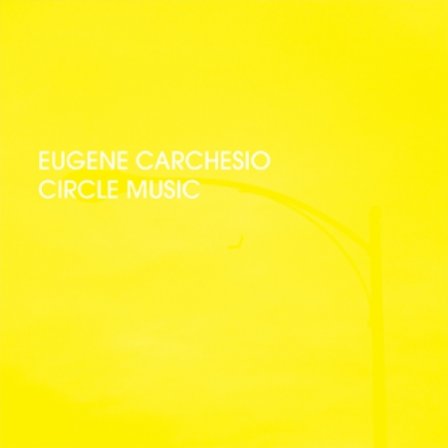It’s satisfying to be able to identify discreet patterns and map their development within specific frameworks. It’s what has made graduated memory-recall a beneficial technique in acquiring knowledge, the scores of Steve Reich so tremendously persuasive, and the beauty of Turkmen jewelry so exasperatingly pronounced. Within its categorical mediums, repetition is used as a linchpin to foster aesthetic appreciation, and that is essentially what we are dealing with here. Through building graciously varied loop formations and tampering with them sporadically across the duration of his latest album, Circle Music, Eugene Carchesio has produced a series of tracks aiming straight at the heart of contentment, the pulses, ripples, and oscillations brought to life in a dazzling interplay of gutsy sequencing and pattern analysis.
Despite an exceptionally intriguing back-catalogue of ambient and experimental efforts released through Kindling Records, Carchesio is mostly renowned for his eclectic output as a visual artist in and around the galleries of Brisbane, Australia. Regardless of the chosen medium, he has continued to brandish a fascination for aesthetic models bolstered primarily by reiteration, environmental recordings, and minimalism while pulling influence from a range of subjects, including Buddhism and hypnotism, themes that remain seemingly close to the fore in his projects as a musician and as a curator. When drawing comparisons with Circle Music, one must look to the artist’s intricate watercolors, which embody the rhythmic geometry of his audio projects in the various incarnations they take. Even though repetition remains a distinctive feature, each painting embodies something unique that is reflected in the variations that exist on this masterly practitioner’s latest offering.
Circle Music presents imagined sets of palpitations that take on a range of different forms across the album’s multifaceted breadth. The appeal lies not only in the fanciful way in which this aural quivering is explored, but in how well every piece is choreographed: exclusive sonic gestures are astonishingly suited to the unconventional contexts that have been built up around them. These environments encompass loops, which are contingent on subtle inflections that mark their course, as particular sounds complete a repeated cycle varying in length, pitch, and tone. The affect is provocative, because it builds on a minimal techno approach without taking it on comprehensively; bass and percussion do feature, but in soft and finespun forms that are swallowed by the spherical embodiments of which they become an integral part. It is an enchanting listen, akin to a panoply of dramatic sensations envisaged through the forms these patterns resemble when they are spun out and reeled back in again, almost the same, only with those subtle differences that make this collection of experiments so blazingly addictive.
From the pulsating brew of radiant bubbles that shuttle and fluctuate on the opening number, to the dripping-tap affinities of “Circle Music 4,” there is much interpretation to be had as a consequence of variation throughout. This is what allows the format to become so exquisite as a consistent focal point: no matter how assorted and abstract these associations might be, the models they are formulated upon remain sturdy and concentrated. The dolphin clicks transmitted on “Circle Music 5” ride on a synthetic riptide of curdling bass and trickling electronic skirmish, which gorges and gargles on its own aggressive looping. On the following piece, divisive loops resemble croaking frogs and noisy cicadas in a deafening midnight micro-opera. Indeed, the dexterity employed in these variations plays a large role in making Circle Music such a stirring listen. Carchesio stretches the circumference of his listeners’ imagination while deploying primed and bracing duplication tactics across his art — the album is a pause, a moment of reflection in asking how these components are pleasing when they are projected in quixotic contexts before they are looped, and looped again, and again looped, and looped again.
More about: Eugene Carchesio

